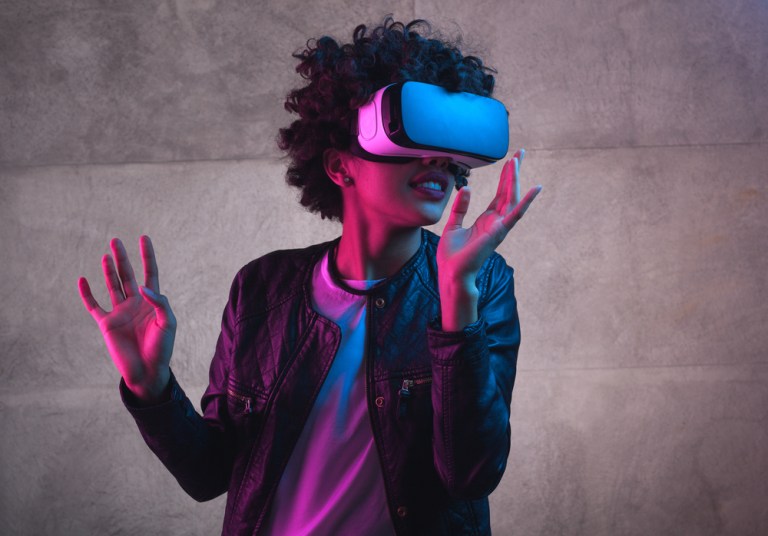Over the past few years, the technology has entered the real world, and the world of consumer goods, through integrations with a device that consumers already have on them constantly: the smartphone.
While the ability to walk through a museum or store, test-drive a car in the Alps or step into a movie without leaving one’s couch still sounds like science fiction, virtual reality has arrived. Now, the technology is making an impact not just for consumers, but also for enterprises, according to Andy Mathis, business development and partnerships for Oculus for Business.
“More recently, we … have started to form some resources to deliver an enterprise-capable platform as well, which just expands the capabilities of VR to a broader set of users, up to and including industries like training, education and healthcare,” Mathis told PYMNTS in a recent interview. “We’re going to make some investments in those areas accordingly.”
While it may be too early to say that virtual reality is an essential tool for business, it might be time to stop saying that the technology is only in the future. Increasingly, companies like Oculus, which has been owned and operated by social media company Facebook since 2014, are already using it to enhance everything from the way enterprises train their employees to the way customers treat entertainment.
VR as an Enterprise Tool
Advertisement: Scroll to Continue
In an effort to attract a wide range of customers, the company has invested in using VR in a variety of use cases, Mathis explained.
So far, Oculus has partnered with businesses in the entertainment, healthcare and retail space as part of this effort. That includes companies like Farmers Insurance and Verizon, as well as music and entertainment services like Spotify and Marvel.
“The work we’ve been doing as Oculus has really been focused on building a great VR platform,” Mathis said. “[This] includes the hardware, the tracking technology [and] the app store for developers to build and distribute their apps to consumers.”
The company also launched its Oculus for Business program last year, in an effort to bring VR to the business world by allowing companies to use its hardware and programs for their own corporate needs. So far, companies are applying virtual reality to internal needs, such as providing a more engaging employee training experience.
Mathis claimed that companies like Walmart are using end-to-end solutions like Oculus enterprise in areas such as training, applying the tech to craft “a unique slew of modules” to better train their staff. Using an Oculus headset, Walmart employees can go through sensitivity training or other types of testing — such as being led through the store, while the headset prompts them when products are mislabeled or understocked. Since deploying the VR training for over 1.2 million employees in the United States, the retailer has seen a 30 percent improvement in test scores, Mathis said, noting that the company also believes such experiences will reduce employee turnover and improve customer satisfaction.
“You learn to be a better customer support agent [with VR], which in turn gives the customers a better experience,” Mathis said, adding that with the “empathy and the emotive connection” that virtual reality provides to employees, the ability to repeat a training scenario can also help the staff respond more intuitively to customers’ needs.
The company is also working with insurance and healthcare providers to provide training, including VRHealth. The pair works to use virtual reality as a tool for the medical field, helping to reduce anxiety before an operation, for instance, or for use in therapy. It’s also working with Farmers Insurance, which uses a VR training module to walk the user through different insurance investigations.
VR as a Tool for the Retail Experience
While virtual reality is expanding its presence as a tool for enterprise, a growing group of companies are experimenting with the technology as something that could apply to retail and customer sales. The average consumer is probably used to seeing VR displays in the odd store or two, but this will likely become increasingly common as more companies get comfortable with the technology.
Of course, the use of virtual reality as a retail tool isn’t particularly new. Brands like TOMS, which famously donates one pair of shoes to a person in need for every pair sold, has been using VR to show consumers the full extent of that program’s reach since 2015. As VR grows, it’s likely that other retail companies will create similar immersive experiences.
The emotive connection brought about by this type of experience will be key as more retailers begin to use virtual reality, as this type of emotional component can really help “to drive sales,” Mathis said.
“I do think as the training experience becomes more prevalent, those same companies that are innovating on the training front will start to discover and deploy retail engagements as well,” he predicted.
However, this innovation relies on the technology being used by more companies, and on consumers being receptive to using VR for shopping and other components of their daily life.
Oculus currently has more applications for enterprise, though they are deploying some retail use cases. The application of virtual reality when it comes to retail is in the “early stage,” Mathis admitted, though he did point to the Audi car company, which is employing virtual reality through Oculus for consumers’ use, allowing them to customize the car they are viewing.
“No one has the time to drive around six different cars with six different interiors — with VR, you can,” Mathis said of the Audi program, adding that Oculus anticipates seeing more of this type of program in the future. “We’re getting a lot of interest from automotive companies to that effect,” he said, though no specific companies were named.
The Future of VR
As companies come to rely more on VR, both as a tool for enterprise and as a new way for consumers to interact with brands, the technology may just come to occupy a unique place in business.
The draw of the technology “comes back to that feeling of presence,” Mathis said, citing one of the more common consumer applications of virtual reality: going into a movie theater and seeing the world reflected in virtual reality, and feeling like they were placed into that movie environment. Replicating that feeling across the retail environment could be key to the future of VR moving forward, according to Mathis.
The social component of the technology is also critical, he added, noting that Oculus has a wide library of VR entertainment experiences for users, stemming from the company’s connection with Facebook and its social component. Virtual reality, according to Mathis, enables the same social experiences that a user would find on Facebook, but in a more immersive fashion.
The future of VR needs to be immersive, social and emotional. As more companies, universities, healthcare providers and other players continue to experiment with the technology, its potential is becoming clear.




